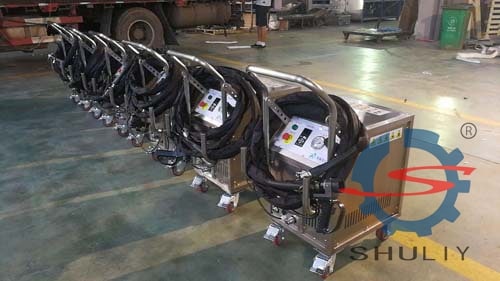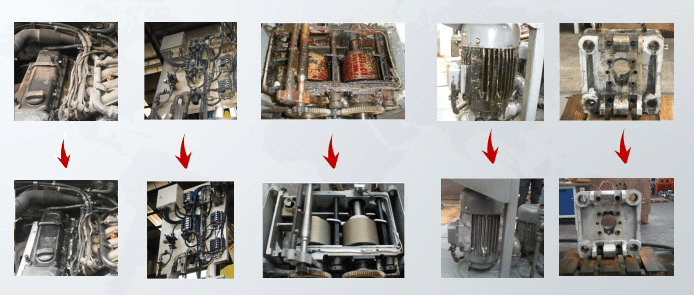Làm sạch bằng đá khô đã được biết đến rộng rãi và máy giặt đá khô đã được sử dụng rộng rãi trong nhiều lĩnh vực. Nhiều khách hàng sẽ cho rằng việc sử dụng công nghệ làm sạch bằng đá khô giúp tiết kiệm nhân công và thời gian so với các phương pháp làm sạch trước đây. Chi phí làm sạch bằng đá khô có cao không?

Chi phí phun đá khô bao gồm các khía cạnh sau:
- Đầu tiên bạn cần mua hoặc thuê một chiếc thiết bị làm sạch bằng đá khô theo nhu cầu của bạn.
- Lượng bụi bẩn và độ khó làm sạch của đồ vật cũng ảnh hưởng đến giá thành giặt đá khô. Đối với những đồ vật có lớp bụi bẩn dày và độ phủ bụi lớn, yêu cầu về công suất máy làm sạch đá khô sẽ tăng lên nên chi phí cũng sẽ tăng theo.
- Việc lựa chọn thông số kỹ thuật đá khô trong quá trình vệ sinh cũng sẽ ảnh hưởng đến chi phí. Giá bột đá khô thấp nhưng lượng tiêu thụ lớn. Hiệu quả làm sạch của đá khô 3mm là phù hợp nhất để làm sạch.

Nguyên lý phun đá khô
1. Sốc nhiệt: sự chênh lệch nhiệt độ giữa chất gây ô nhiễm và bề mặt vật thể (tác động lạnh -79°C), bề mặt chất bẩn nhanh chóng bị làm lạnh xuống -79°C bởi các hạt đá khô, dẫn đến chất bẩn đông cứng và giòn và độ bám dính trên bề mặt được làm sạch giảm mạnh.

2. Năng lượng động học cơ học: Các hạt đá khô va chạm vào bề mặt của vết bẩn với tốc độ cao. Thông thường, tốc độ của đá khô vượt quá tốc độ âm thanh. Viên đá khô có độ cứng thấp ở tốc độ cao (thang Mohs là 2) và không làm hỏng bề mặt của vật thể được làm sạch.
3. Thăng hoa vật lý: Các hạt đá khô thăng hoa khi tiếp xúc với bề mặt cần làm sạch, đá khô sẽ chuyển từ thể rắn sang thể khí. Thể tích của viên đá khô tăng gấp 800 lần trong quá trình làm sạch bằng đá khô. Vụ nổ này không phá hủy bề mặt đang được làm sạch, nhưng vết bẩn được loại bỏ bằng cách thổi bay. Các hạt đá khô mang theo các chất gây ô nhiễm và làm chúng rơi ra khỏi bề mặt của vật thể mà không làm hỏng bề mặt. Toàn bộ quá trình không tạo ra nước và không cần hóa chất.